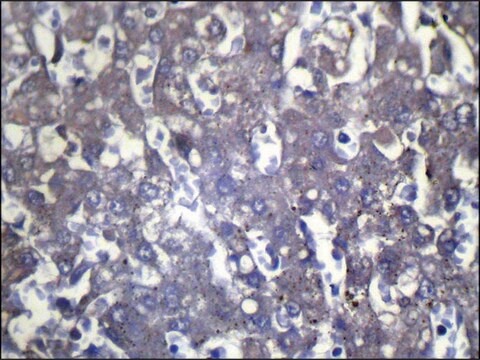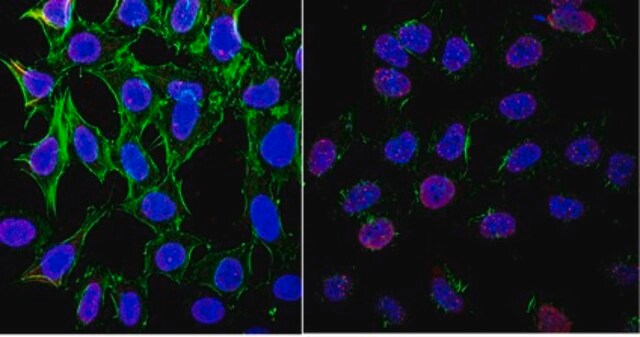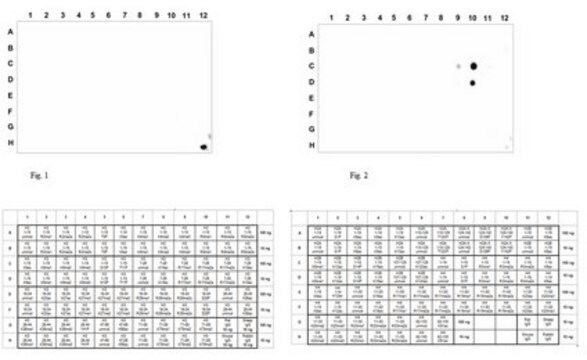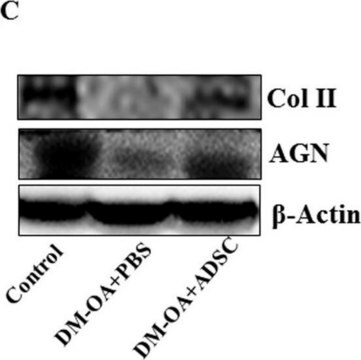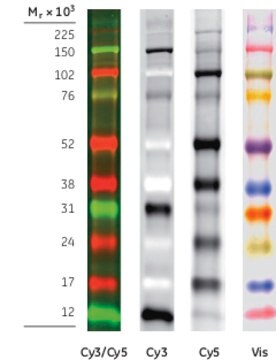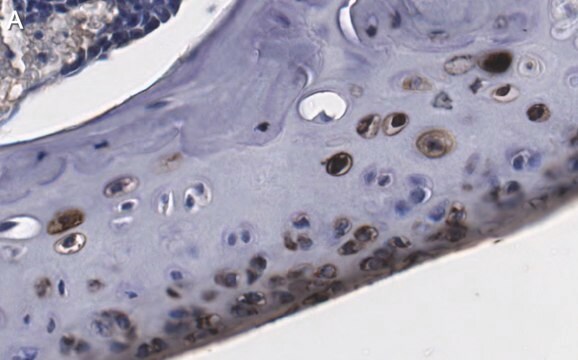MABF946
Anti-H-2K Antibody, clone Y-3
clone Y-3, from mouse
Synonyme(s) :
H-2 class I histocompatibility antigen, K-B alpha chain, H-2K, H-2K(B), H-2K(K), H-2K(Q), H-2K(R), H-2K(S), Beta-2-microglobulin
About This Item
Produits recommandés
Source biologique
mouse
Niveau de qualité
Forme d'anticorps
purified immunoglobulin
Type de produit anticorps
primary antibodies
Clone
Y-3, monoclonal
Espèces réactives
mouse
Technique(s)
affinity binding assay: suitable
flow cytometry: suitable
immunocytochemistry: suitable
immunoprecipitation (IP): suitable
Isotype
IgG2bκ
Numéro d'accès NCBI
Conditions d'expédition
ambient
Modification post-traductionnelle de la cible
unmodified
Informations sur le gène
mouse ... H2-K1(14972)
Catégories apparentées
Description générale
Spécificité
Immunogène
Application
Affinity Binding Assay: A representative lot reacted with cell surface murine class I MHC H-2K haplotypes b, k, q, r, s, but not d, in affinity binding assays utilizing 125I-labelled antibody. Clone Y-3 exhibited similar affinity toward seven H-2Kb mutant strains as the wild-type strain (Hämmerling, G.J., et al. (1982). Proc. Natl. Acad. Sci. U. S. A. 79(15):4737-4741).
Flow Cytometry Analysis: A representative lot detected the surface expression of exogenously transfected H-2Kb Y84C mutant among TAP- and tapasin-deficient BL/6 fibroblasts, while little exogenously expressed wild-type H-2Kb was detected on the cell surface in the absence of either TAP or the TAP-binding protein tapasin (Wijeyesakere, S.J., et al. (2015). Proc. Natl. Acad. Sci. U. S. A. 112(41):E5608-5617).
Flow Cytometry Analysis: Clone Y-3 ascites fluid detected an induciton of cell surface H-2K immunoreactivity upon exogenous murine calreticulin (mCRT) expression in the CRT-deficient K42 mouse fibroblast line (Del Cid, N., et al. (2010). J. Biol. Chem. 285(7):4520-4535).
Immunocytochemistry Analysis: A representative lot detected the surface expression of exogenously transfected H-2Kb Y84C mutant among TAP- and tapasin-deficient BL/6 fibroblasts, while exogenously expressed wild-type H-2Kb remained intracelluar in the absence of either TAP or the TAP-binding protein tapasin (Wijeyesakere, S.J., et al. (2015). Proc. Natl. Acad. Sci. U. S. A. 112(41):E5608-5617).
Immunoprecipitation Analysis: A representative lot immunoprecipitated H2-K from a calreticulin-/CRT-deficient mouse embryonic fibroblast (MEF) line transfected to express murine CRT (Wijeyesakere, S.J., et al. (2015). Proc. Natl. Acad. Sci. U. S. A. 112(41):E5608-5617).
Qualité
Flow Cytometry Analysis: 0.1 µg of this antibody detected H-2K immunoreactivity on the surface of one million C57BL/6 mouse splenocytes (H-2 haplotype b).
Description de la cible
Forme physique
Autres remarques
Vous ne trouvez pas le bon produit ?
Essayez notre Outil de sélection de produits.
Code de la classe de stockage
12 - Non Combustible Liquids
Classe de danger pour l'eau (WGK)
WGK 2
Point d'éclair (°F)
Not applicable
Point d'éclair (°C)
Not applicable
Certificats d'analyse (COA)
Recherchez un Certificats d'analyse (COA) en saisissant le numéro de lot du produit. Les numéros de lot figurent sur l'étiquette du produit après les mots "Lot" ou "Batch".
Déjà en possession de ce produit ?
Retrouvez la documentation relative aux produits que vous avez récemment achetés dans la Bibliothèque de documents.
Notre équipe de scientifiques dispose d'une expérience dans tous les secteurs de la recherche, notamment en sciences de la vie, science des matériaux, synthèse chimique, chromatographie, analyse et dans de nombreux autres domaines..
Contacter notre Service technique